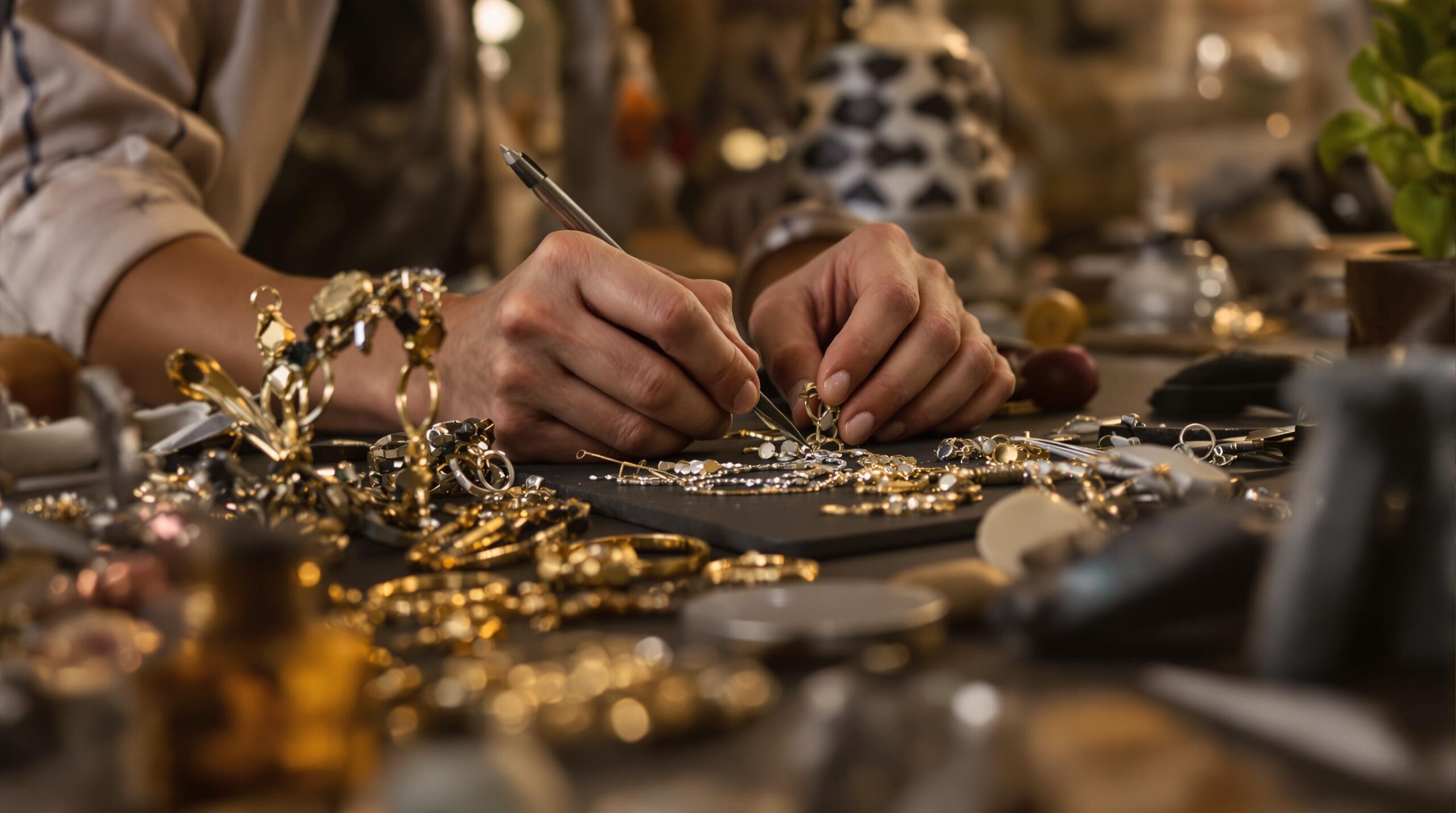In recent years, the luxury jewelry industry has significantly shifted toward sustainability. Handcrafted jewelry has stepped into the spotlight as a symbol of this change. Through meticulous craftsmanship and eco-friendly practices, artisanal jewelry redefines what luxury means today. This article delves into how these timeless pieces transform the luxury landscape with a sustainable edge.
The Rise of Handcrafted Jewelry
The appeal of handcrafted jewelry lies in its uniqueness and quality. Each piece is created with time and attention to detail, producing a product that reflects the artisan’s craftsmanship. Unlike mass-produced items, these pieces offer exclusivity. People appreciate knowing their jewelry is one-of-a-kind.
Handcrafted jewelry also provides a personal connection between the maker and the wearer. Customers are more likely to value items that tell a story. Artisans often share narratives about the materials and inspiration behind each creation. This storytelling aspect adds a layer of meaning to the purchase, setting handcrafted pieces apart from factory-made ones.
Moreover, the resurgence of interest in handcrafted jewelry can also be attributed to the slow fashion movement. This movement encourages consumers to value quality and longevity over quantity. Customers now prefer fewer but better-made items in their wardrobes, and jewelry collections are no exception.
Craftsmanship Meets Sustainability
Handcrafted jewelry emphasizes sustainability through the ethical sourcing of materials. Artisans often use recycled metals and ethically sourced gemstones. This conscious choice reduces the environmental impact caused by mining and extraction.
In many cases, artisans also incorporate locally sourced or reclaimed materials, supporting local communities. This practice helps reduce the carbon footprint associated with long-distance transportation. As consumers grow more conscious of their environmental impact, these practices increase a brand’s appeal.
Energy efficiency is another facet where handcrafted jewelry makes a difference. Artisans typically use less energy than large-scale manufacturers, which require extensive machinery. This lower energy consumption contributes less to global pollution and resource depletion.
Enhancing the Value Proposition
Timeless, handcrafted jewelry offers intrinsic and extrinsic value. Extrinsic value refers to a product’s financial worth, often appreciating over time due to its rarity and quality. On the other hand, intrinsic value relates to the emotional and aesthetic contribution to the owner.
Handcrafted pieces also allow personalization, allowing customers to co-create their jewelry. This customization ensures that each piece holds personal significance. Personalized features enhance intrinsic and extrinsic value, whether they incorporate a birthstone or heirloom.
Brands promoting transparency and sustainable practices gain more trust and loyalty as conscious consumption grows. Consumers lean towards businesses that reflect their values, creating positive brand associations. In this way, handcrafted jewelry symbolizes informed and ethical consumer choices.
Challenges in Mainstream Adoption
Despite its benefits, handcrafted jewelry faces challenges in achieving mainstream adoption. One significant issue involves scalability and meeting growing demand. Artisans may struggle to produce larger volumes without compromising quality or sustainability. Balancing these demands requires innovation and adaptability from both artisans and consumers.
Another challenge lies in consumer perception. Some consumers perceive handcrafted items as more expensive than mass-produced options. Artisans need to emphasize the value and sustainability behind their pricing strategies. Education and marketing efforts help shift perceptions, highlighting the long-term benefits of quality over quantity.
Furthermore, artisans often face competition from counterfeit markets. Imitations can mislead consumers, diluting the value associated with authentically handcrafted pieces. To combat this, artisans need robust branding and authentication measures, assuring buyers of genuine craftsmanship.
Innovations and Future Outlook
Despite challenges, technological innovations offer solutions that may propel handcrafted jewelry into the future. Online platforms enable artisans to reach a global audience, capitalizing on e-commerce potential. These platforms provide visibility to small businesses operating out of unique locales.
3D printing technologies also offer artisans new tools for expansion. While traditional jewelry-making relies on manual techniques, 3D printing can complement these methods. Artisans can experiment with complex designs by incorporating digital technology while maintaining artisanal quality.
Another exciting development lies in blockchain technology applications. Blockchain can ensure transparency in sourcing and authentication processes. Using blockchain, consumers can trace the journey of their jewelry, reinforcing trust and security.
Looking forward, partnerships between artisans and fashion brands may enhance visibility and scale production without sacrificing quality. As luxury fashion brands pivot towards sustainability, collaborations with experienced artisans prove mutually beneficial. Brands gain handcrafted quality and authenticity, while artisans receive support and access to larger markets.
Conclusion
Handcrafted jewelry is not just a nostalgic nod to traditional artistry. It represents a harmonious blend of craftsmanship and sustainable development. As environmental consciousness rises, luxury becomes synonymous with sustainability. Handcrafted jewelry is at the forefront of this evolution, offering exclusivity, quality, and ethical production.
More than a trend, the movement towards handcrafted, sustainable jewelry reflects a societal value shift. Consumers are now making informed choices that favor longevity and ethical sourcing. As this movement grows, the luxury industry must adapt to meet these demands intelligently.
By embracing innovative technologies alongside traditional techniques, artisans can strengthen their impact. This approach ensures that timeless, sustainable elegance thrives across generations. In capturing the essence of sustainability and luxury, handcrafted jewelry undoubtedly shapes the industry’s future.

